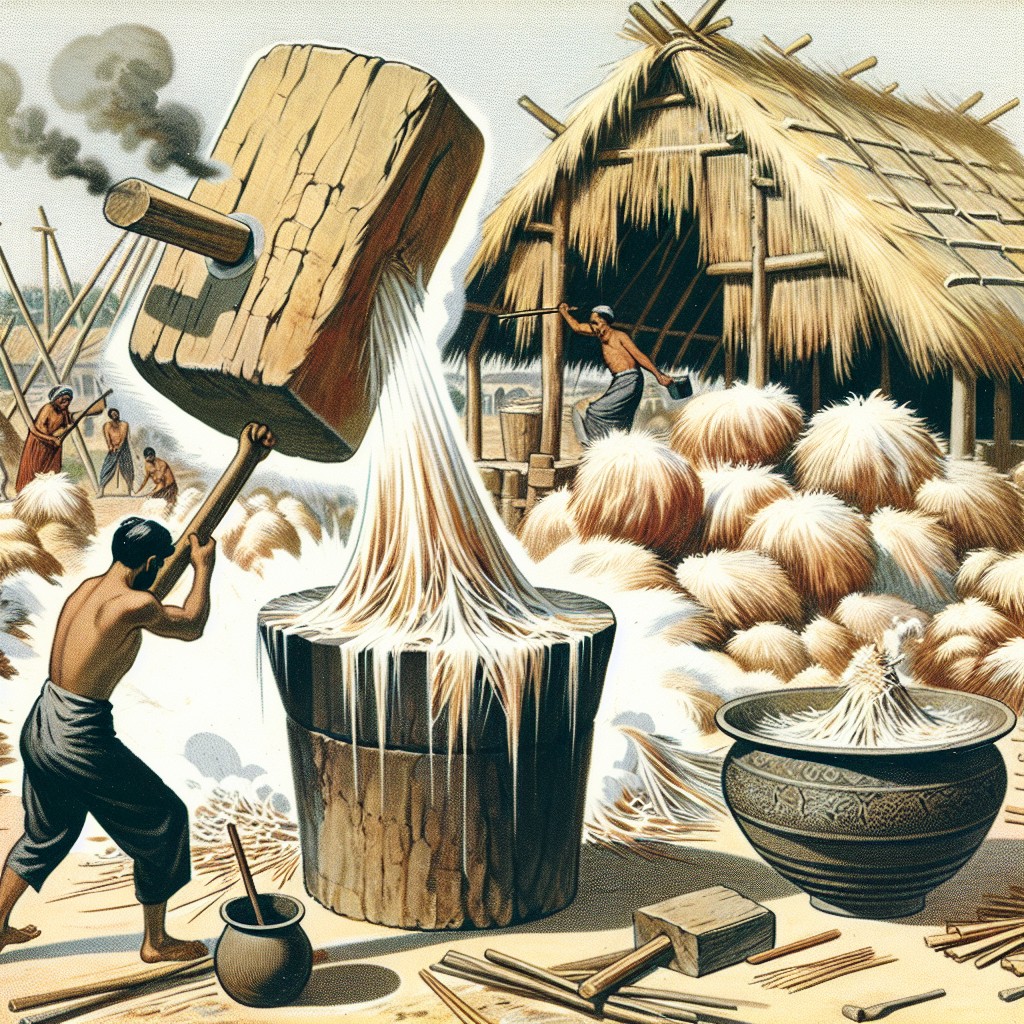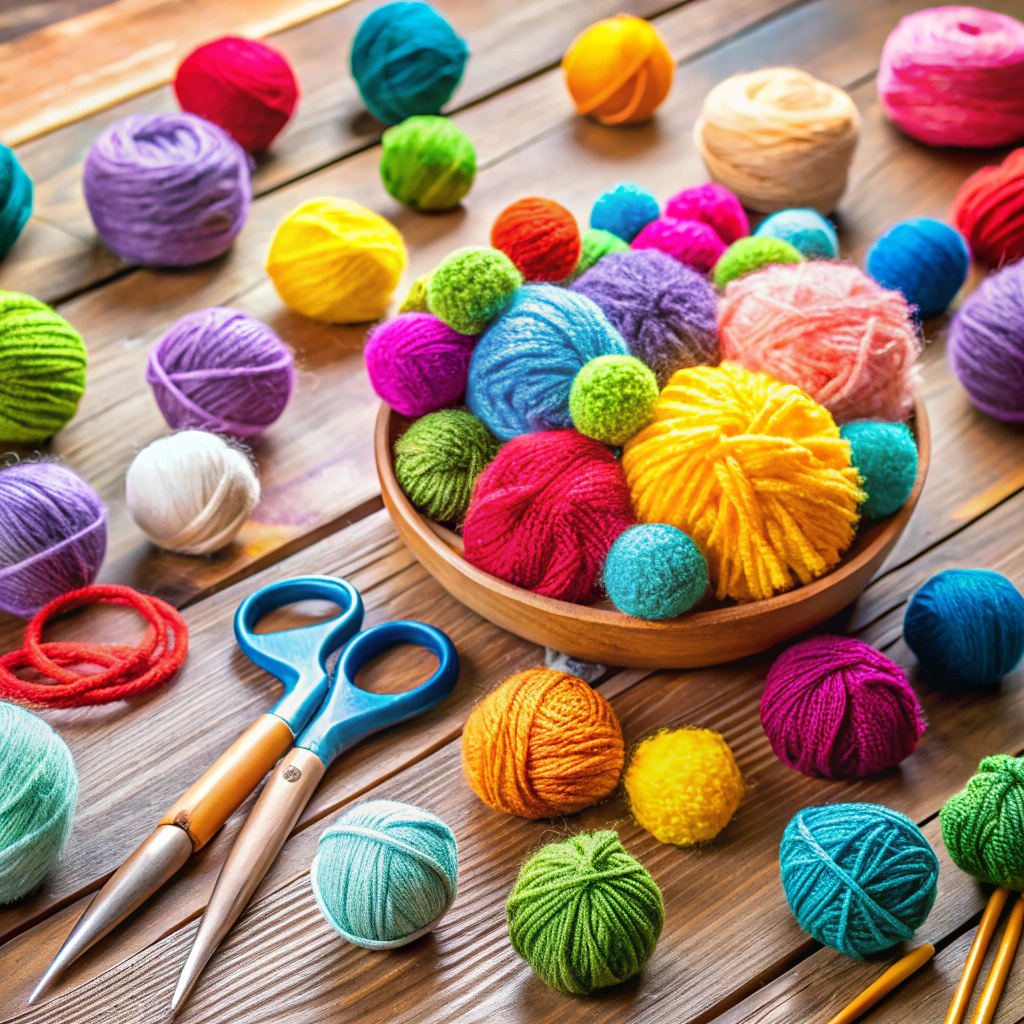Thwacking might seem like an unusual term, but because it’s an essential technique in finishing handspun yarns, mastering it can significantly enhance your crocheting and knitting projects.
Key takeaways:
- Thwacking is a finishing technique to even out yarn twist.
- Different fibers react differently to thwacking.
- Wet finishing is essential before thwacking.
- Thwack by swinging and hitting the skein against a surface.
- Thwacking enhances yarn texture and appearance.
Definition of Thwack

Thwacking is a finishing technique applied to handspun yarn or store-bought skeins to even out the twist and encourage the fibers to bloom.
After washing or soaking a yarn, it is forcefully swung and then struck against a hard surface.
This action helps to relax and set the fibers, balancing out any over-twisted areas and giving the yarn a softer, fuller appearance.
Benefits include a more cohesive thread and an improved hand-feel, which contributes to the overall quality and durability of finished knit or crochet projects.
It is particularly useful for energized singles or yarns that have been sitting in stash for an extended period and may have developed kinks or coils.
The Fiber

Understanding the type of fiber in your yarn is crucial before proceeding to thwack. Natural fibers like wool, alpaca, and mohair have scales along their surface, allowing for the fibers to interlock upon agitation. Synthetic fibers, however, such as acrylic and nylon, lack these scales and therefore respond differently to thwacking.
Plant fibers, like cotton and linen, can benefit from thwacking in terms of softening the yarn, but will not full or felt like animal fibers. The presence, absence, or structure of scales on fiber affects how it will react to being thwacked, and thus dictates the force and technique to use. Thwacking those with scales can enhance their plushness and even out the twist in the spun yarn, while gentle handling is key for synthetics to avoid causing damage or unwanted stretching.
Each fiber type has unique characteristics that influence the outcome of wet finishing processes, and knowing these can help achieve the desired effect in your finished yarn project.
How to Wet Finish a Skein of Yarn

Wet finishing is the process that sets the twist in yarn and smooths its fibers, enhancing the hand-made yarn’s texture and appearance. Follow these steps to wet finish a skein:
1. Fill a basin with lukewarm water; extreme temperatures can shock fibers.
2. Add a gentle wool wash to the basin if desired, avoiding harsh detergents that can strip natural oils.
3. Submerge the skein fully, ensuring it is thoroughly saturated.
4. Soak for 15-30 minutes to allow fibers to absorb water and relax.
5. Rinse the skein by replacing the soapy water with clean water if a wool wash was used.
6. Gently squeeze out excess water without wringing, as this can cause felting, especially in animal fibers.
7. Roll the yarn in a towel, pressing to remove additional water.
8. Hang the skein to dry or lay it flat on a towel, shaping it to its original form.
9. Allow the yarn to dry completely before handling further.
Wet finishing sets the stage for the thwacking process, preparing the yarn fibers to bloom and even out.
How to Thwack

Ensure your finished skein is thoroughly soaked in water, gently squeezing to distribute moisture without wringing. Remove from the water and gently squeeze out excess water with a towel.
Hold the skein at opposite ends and snap it firmly, similar to how one might snap a towel. Then, proceed to hit the skein against a sturdy surface such as a bathtub or outdoor railing. Rotate the skein periodically to ensure even thwacking. Use a controlled swinging motion to ensure the skein impacts the surface solidly but is not damaged by excessive force.
Continue this process until the yarn has fluffed up and the fibers have relaxed, typically a few minutes. After thwacking, lay the skein flat or hang it to dry completely before use.
Why Thwack?
Thwacking yarn after wet finishing serves to energize the fibers, creating a bloom effect that enhances the hand of the yarn. This process can also help to even out the twist in the yarn, ensuring a more uniform appearance and texture. It’s particularly useful for yarns that may have residual spinning oils, as thwacking helps to fully remove these and allows the yarn to fully fluff up.
For handspun yarns, thwacking is essential to set the twist, resulting in a balanced fabric when used in projects. Whether working with wool, alpaca, or other fibers, thwacking encourages the natural characteristics of the yarn to shine through, providing a professional finish to your hand-crafted textiles.
Method
After wet finishing your skein and allowing excess water to drip off, choose an appropriate area, ideally outdoors, where the skein can be forcefully swung. Grasp the knotted ends of the damp skein securely.
Swing the skein forward with a firm, smooth motion so that the middle of the skein strikes a sturdy, but not too hard, surface such as over a PVC pipe or the back of a wooden chair. The force should cause the fibers to plump and the yarn to bloom.
Rotate the skein and repeat several times to ensure even thwacking. Allow the yarn to dry thoroughly post-thwacking. Avoid over-thwacking to prevent felting or damaging the yarn.
Always remember the force applied should be firm but controlled, tailoring it according to the fragility or sturdiness of the yarn type.
Results
After the thwacking process, you’ll typically notice several changes in the skein’s characteristics. The yarn fibers often bloom, creating a fuller, softer feel. This is especially evident in animal fibers like wool, where the scales on the fibers can interlock slightly to produce a denser fabric.
The yarn may also appear more even in texture as thwacking can help balance out any inconsistencies in the spin or ply.
In addition to textural changes, thwacking can improve the drape and resilience of the knitted or crocheted piece. Yarn that has been properly finished will maintain its shape better and exhibit less twisting or curling at the edges. It’s not uncommon to observe enhanced stitch definition, making patterns more pronounced and visually appealing.
Lastly, this technique can also reduce any residual spinning oils or lanolin in the wool, leaving you with a cleaner, more lustrous final product.
Positives for Thwacking Your Yarn
Thwacking your yarn enhances its final appearance and texture. This finishing technique can enliven the yarn’s natural characteristics, helping plied yarns to settle into their final structure.
Yarn fibers treated with thwacking often bloom, becoming fuller and softer, which can improve the hand and drape of the finished fabric. Additionally, thwacking helps to balance the twist in hand-spun yarns, reducing skewing in knitted or crocheted pieces.
For those working with fibers prone to being energized, such as wool, thwacking gently relaxes the strands, allowing for more even stitches in your crafting. It’s a straightforward process that yields noticeable results, contributing to the professional quality of handmade projects.
Negatives
While the thwacking technique can enhance the characteristics of many yarns, it’s not without its drawbacks. Certain delicate fibers, such as cashmere or alpaca, may be prone to excessive felting or damaging when subjected to the aggressive nature of thwacking. This can result in a yarn that’s less soft, with a compromised texture.
It’s also noteworthy that thwacking hand-dyed yarns might lead to the unwanted release of excess dye, which could potentially stain surfaces or other materials. Always test a small section first if you’re unsure how the yarn will react.
In addition, noise-sensitive individuals or those living in close quarters may find the physical act of thwacking disruptive. Considering these factors is crucial for ensuring the finished product meets the desired quality without causing unintended harm to the yarn or disturbance to the surrounding environment.
FAQ
What does Thwack mean slang?
In crochet and knitting context, "thwack" is a slang term that means to beat, hit, or flog, especially with something flat.
What is a thwack sound?
A thwack sound refers to the short, loud noise produced when an object like a stick forcefully hits a surface.
What does Thwacking yarn do?
Thwacking yarn makes the handspun yarn feel more fluffy and lofty.
What does a twack mean?
A twack in the context of crochet and knitting refers to a heavy blow or whack, often associated with the sound produced by such an impact.
How does the thwacking process affect different types of yarn?
The thwacking process essentially helps set the twist of handspun yarn, with different yarn types reacting uniquely, the more durable types can withstand more vigorous thwacking while delicate types may require gentler treatment to avoid breakage.
What are the potential drawbacks or risks involved with thwacking yarn?
Thwacking yarn, a technique used to set twist and redistribute fibers, can potentially cause yarn breakage or misshape delicate fibers if applied too harshly.
How does thwacking influence the finished look and feel of a knitting or crocheting project?
Thwacking, a finishing technique, enhances the finished look and feel of a knitting or crocheting project by setting the twist, evening out irregularities, and fluffing up fibers, resulting in a more balanced and softer hand.





